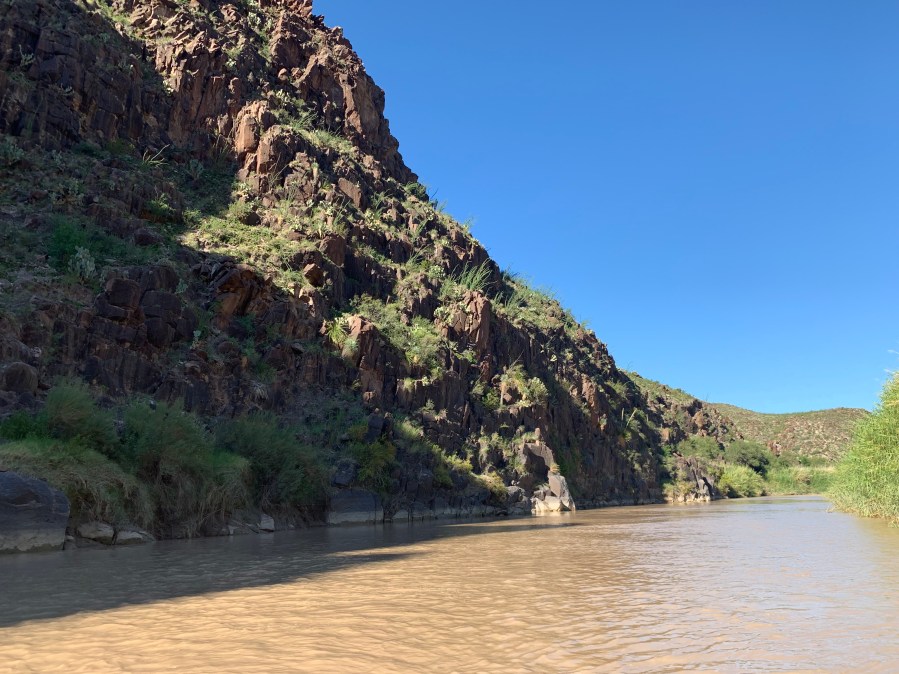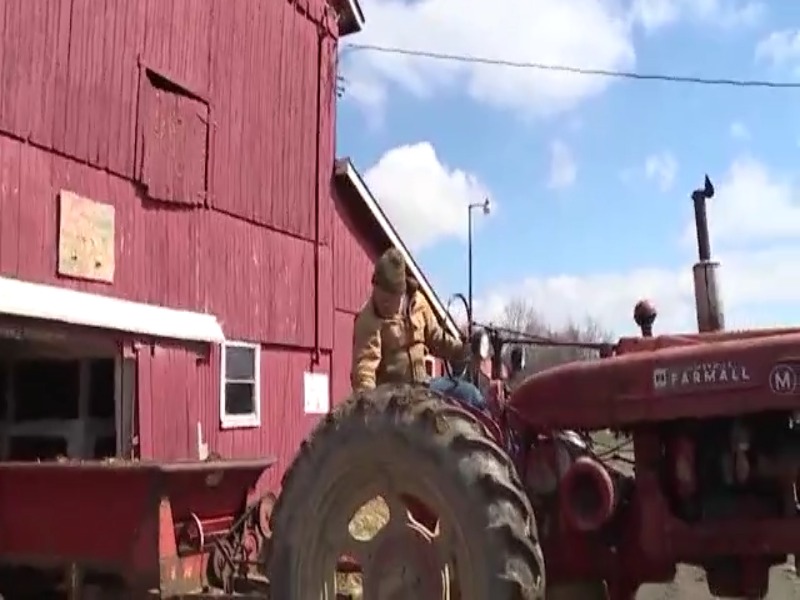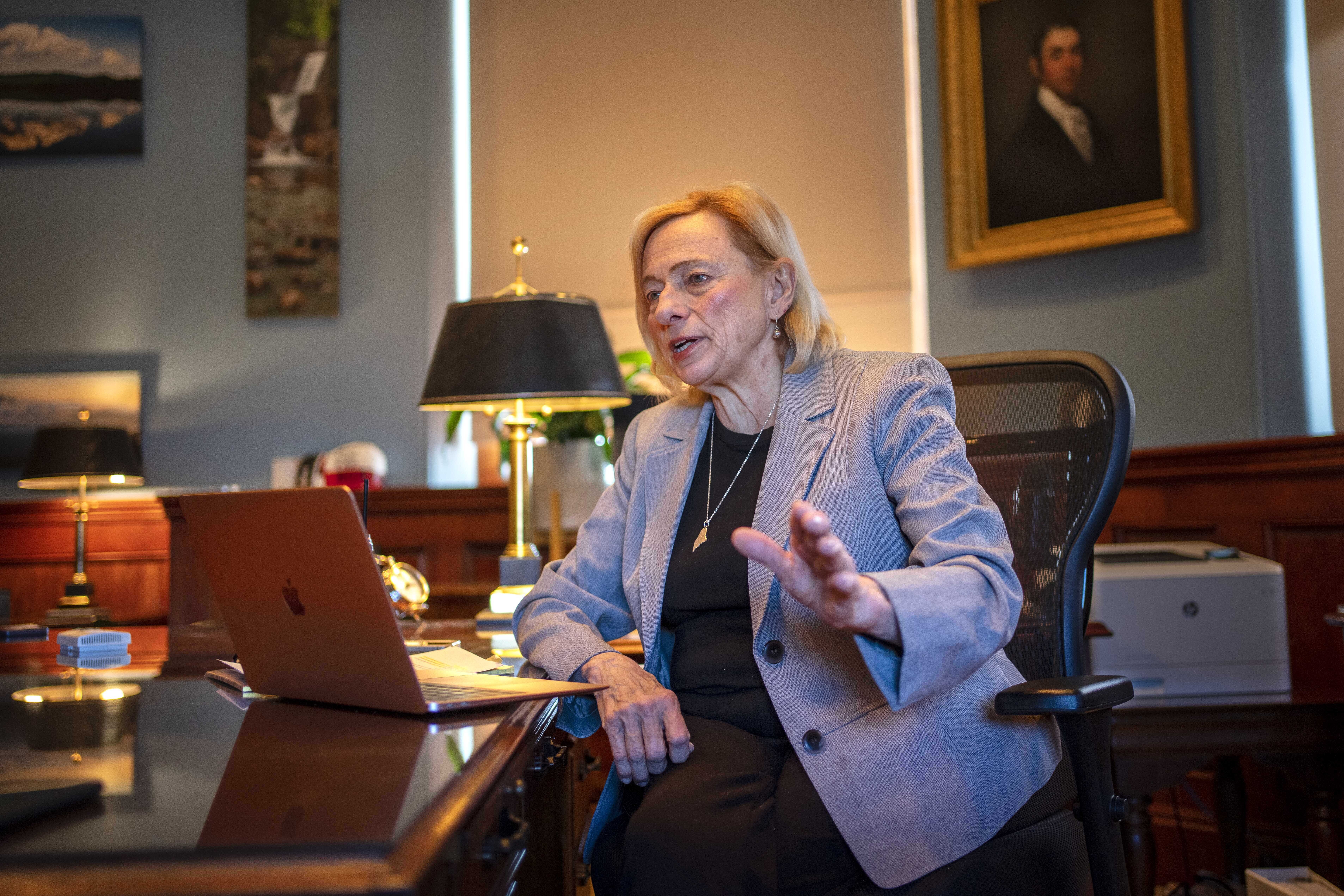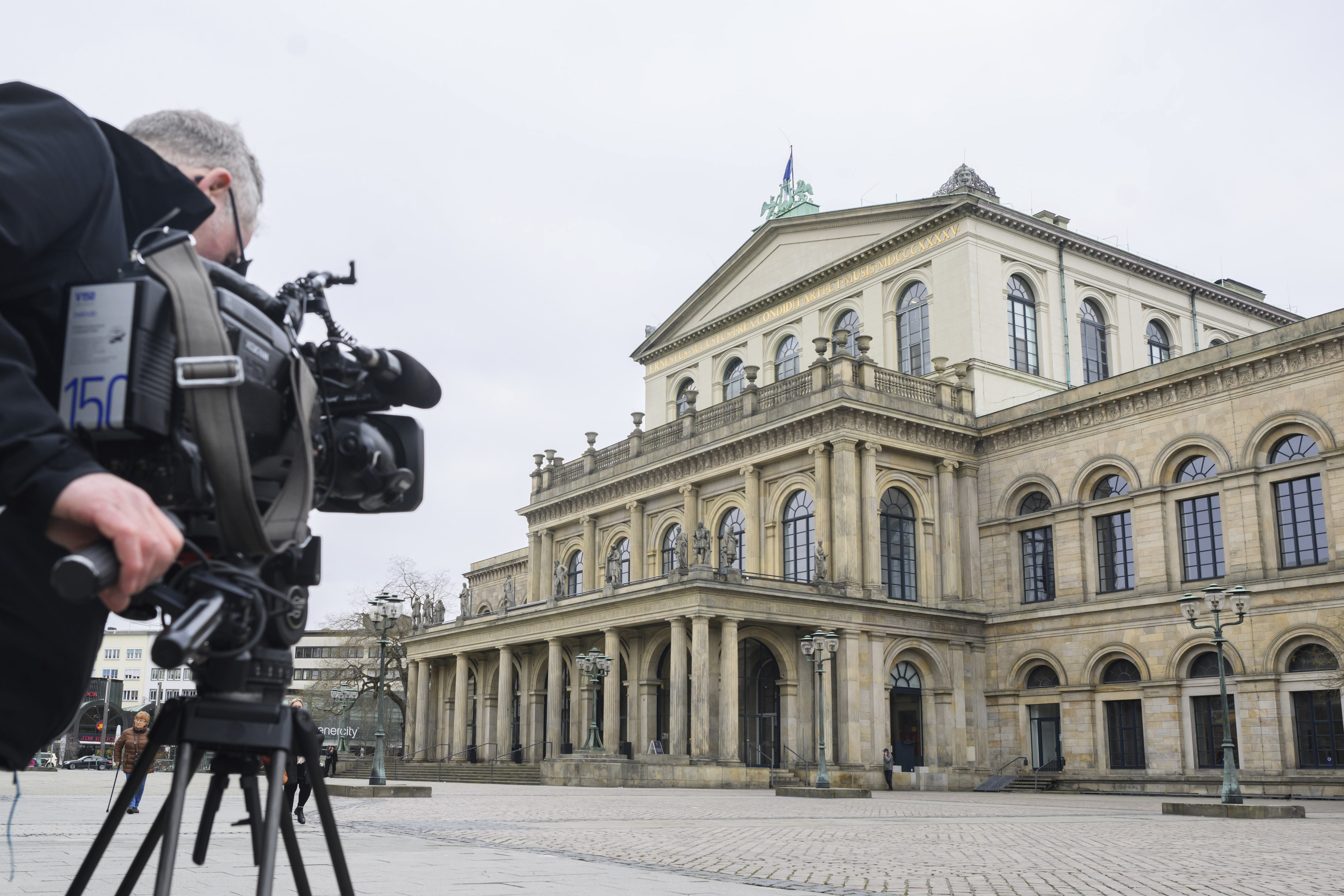Boat tour companies in Big Bend rely on giving river tours and owners say could be impacted if a border wall is built
BIG BEND RANCH STATE PARK, TEXAS (Border Report) — Rafting guide Anna Cole Rickman, 23, makes her living on the waters of the Rio Grande.

She has given boat tours in almost every state and said she learned to row at age two in her home state of Georgia. This particular stretch of the Rio Grande is one of her favorites, she said, as she rowed for four hours down the river on Friday, leading a boat tour of tourists.
The rains have been unusually high lately and the Chihuahuan Desert was especially green.
“The greenest you’ll probably ever see it. You could come back a hundred times and probably not find it like this,” said Richman’s boss, James Olk, part-owner of Big Bend River Tours.

Olk has been boating professionally for 29 years. He moved here in 1991 and has been taking tourists out on the Rio Grande in this state park, which is marketed online as: “Welcome to the other side of nowhere.”

‘Welcome to the other side of nowhere’
It’s about a seven-hour drive into Big Bend on roads that twist, turn and skirt the majestic Chisos Mountains. The roads also plow a path through this vast desert.
Bordering all of it is the curvy Rio Grande — the U.S. border with Mexico.

This is where Rickman and Olk earn their living. These are the sights that they say they love to show to tourists.
“Every day is different and you get to meet people from all over the world,” Olk said as he put out a lunchtime spread of cheese, crackers and fruit slices during a break in the four-hour tour.
Business is good right now, he said. When he first started, they barely worked a dozen trips per month in the summers.
“Now it stays pretty busy here all the time,” Olk said.
They run about 40 trips per month, including night-time river excursions for folks to experience the twinkling bright stars here in what is the darkest place in North America.
But Olk and Richman both wonder what a border wall would mean for their industry and their livelihood. Right now, nobody knows if, much less when a wall would be built. And Olk mostly wonders how, since any type of wall would have to be built high on the banks, well above the river cane. That is because the soft soil in many parts is constantly falling into the river canyon and the typography shifts and changes daily. They say the area also is prone to flooding when it rains like it had on Thursday.
“Nobody really knows what their plans are,” Olk said. “It’s kind of a unique environment.”
A government shutdown occurred in January after Congress could not agree on a budget with lawmakers split on funding for a border wall. And while President Donald Trump has been adamant about building a wall from South Texas to San Diego, California, he has said that some parts, like the Big Bend area, might not be suited for it.

Rickman has worked this river for two years and she says “people ask all the time” about the wall and immigration issues.
“And I have pretty much the same answer all the time: We’re so far out here on this stretch that the scariest thing you’re going to see is a mountain lion,” she said.
There are no restaurants or homes out here. The river flows through a state park here, which then turns into Big Bend National Park, which is even more isolated.
These cliffs were believed to have been formed 30 million years ago from volcanic ash. Some like Dark Canyon, jut up to 800 feet in the air and tower over the river.

“We have a natural barrier in many places here,” Olk said.
Prickly pear cactus perch on the cliff rocks, while turtles sun themselves on rocks in the middle of the river. Coyotes, javalinas, Mexican black bears, bighorn sheep and its rival, the aoudad, all make their home here.
Rickman said sometimes herds of aoudads are on the rocks unnoticeable because they blend in.
“Sometimes you’ll go through a canyon and not realize the aoudads and then the whole side of the mountain will start to run,” she said.
For Rickman, if a wall blocks that view, and “if it got to where we didn’t have the wilderness, I’d have a problem with it,” she said.
Amy and Jay Harvey, of Dallas, were riding the rafts on Friday.
“It’s beautiful. Every part is different,” Amy said.
When asked if they were fearful to be so close to Mexico, they responded in unison: “No, not at all.”
“They have been our neighbors for as long as time can remember,” Amy said. “We should have friendly relations.”

“I was surprised that was Mexico, but it doesn’t worry me,” said Laura Syrett, who was on the tour visiting with her husband, Peter Evans, of London. “I did think there would be Border Patrol all along the border. But it would be pretty hard for someone to cross here.”
Sandra Sanchez can be reached at SSanchez@BorderReport.com. She is traveling with a crew of journalists from San Diego to Brownsville, Texas, reporting all along the Southwest border.













